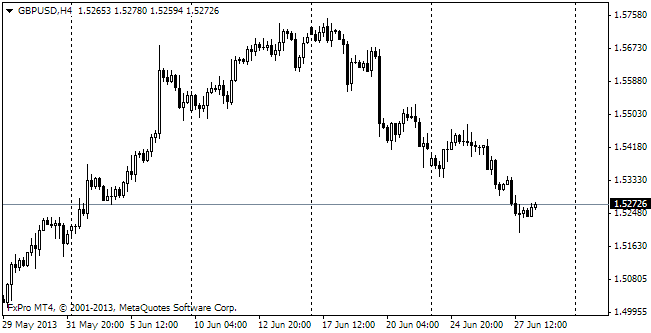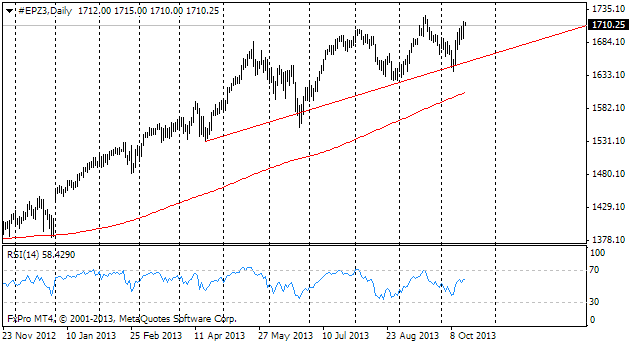EUR/usd
Thanks to the strong statistics from Germany, the single currency managed to continue forming a short-term uptrend. The German ZEW index has risen to 11.5 in November, which is the first increase of the index since December 2013 and is much above the forecast rate of just 0.9. It is of interest that the Current Situation Index also has grown (often it moves in the opposite direction from the general index). Yet, the growth was very little, just 0.3 points up to 3.5. The ZEW Economic Sentiment for the entire eurozone also proved to be better than expected. In November it has made 11.0 against 4.1 a month ago. Against this background the pair managed to launch an attack and reach 1.2540. Though later the pair faced some difficulties with holding this position. It is remarkable that the PPI growth didn't produce due impact on the markets – market participants didn't rush to buy the US currency after the news about growth of the index by 0.2% in October ( against the forecast decline by 0.1%) and slowdown of the annual inflation just to 1.5% instead of the expected 1.2%. The core prices (excluding food and energy) grew by 0.4% on average, accelerating the annual growth to 1.8% from 1.6% a month before. These are quite favourable rates, which show that in the near future America may deal with the growing inflation pressure due to the improved situation in the labour market. Also this report can become a herald of strong data on consumer inflation. And these statistics will already be hard to ignore. Those, who look at the short-term prospects of the market, should pay attention to the fact that within the uptrend of the recent 1.5 weeks eurusd has approached the resistance, off which it can pull back down to 1.2440.
GBP/USD
The price statistics in Britain only seemed to be positive. The core and most important inflation index grew from 1.2% to 1.3%, but most other indicators proved to be in the red zone. Thus, retail prices didn't change, while their annual growth makes 2.3%. Besides producer prices keep falling, promising pressure on the consumer inflation in the coming months. After thinking for a while, pound-traders started selling the currency. Today during the Asian session the pair again ran the risk of falling below 1.5600. But actually, it is a question of few days.

USD/JPY
The front pages of the financial editions have abounded with news about Japan recently. And there is really something to discuss. Yet, to some extent this news contributes to weakening of the Japanese currency. We spoke about such results earlier this week. Then the market didn't show any reaction to the reduction of the country's GDP. Anyway, Abe kept his promise – called the elections, being sure to get more freedom for carrying out reforms in the country and put off raising of the sales tax to stimulate the economy. Today the Japanese Bank in its new decision on the monetary police has pointed out ‘certain weakness' in the real sectors because of the decrease in the inner demand following the tax increase.

Unlike the dollar, the US stock market shot up on the strong economic news. The new record of the index, of course, raises chances of a pullback. However, it should be realized that the market can't be considered overbought as it is full of new participants, with fresh vigour making purchases after the decline in October. One of the overbuy indicators, RSI, has just got close to 70. Bulls already should be more cautious, while bears need to wait with selling until the oscillator returns from the overbuy zone (above 70) after first getting there.
